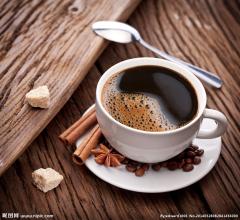Citrus, peach, Panamanian coffee manor flavor and taste characteristics of Arida Manor
In November 1903, the United States instigated Pakistan to become independent from Colombia and establish the Republic of Panama. On November 18, the United States and Pakistan signed the Panama Canal Treaty, in which the United States obtained the right to "permanently use, occupy, and control the Panama Canal," and then controlled the administration, judicature, security, railways, and finance of the Canal Zone, making the Canal Zone a veritable "state within a country." The treaty was the subject of a diplomatic dispute between the two countries until 1977 when the United States agreed to return management of the Panama Canal to Panama in 1999.
General Omar Torrijos came to power in 1968 and was the de facto manipulator of Panamanian politics until he died in a plane crash. After Torrijos's death, Manuel Noriega came to power.
On September 7, 1977, the governments of the United States and Panama signed a new treaty on the Panama Canal. The new treaty stipulates that the United States will gradually return all sovereignty and jurisdiction over the canal and canal zone to Panama by the end of 1999.
In the statistics of the opening of the presidential election in May 1989, Guillermo Ndalla (Guillermo Endara), the presidential candidate jointly nominated by the opposition parties, won the election, but Noriega declared the election null and void, and the United States imposed economic sanctions on Pakistan in September of the same year. In December 1989, a US Marine was killed, and the United States sent troops to Panama on the grounds of protecting the safety of American residents. On December 15th Noriega declared a state of war with the United States and became head of state.
On December 20, 27000 US troops launched a military operation against Panama to overthrow the Noriega regime, and Ndalla became president. Noriega fled to the Vatican Embassy and surrendered to the US military on January 3, 1990. he was immediately transported to Florida, where he was charged and detained. The US military invasion killed about 2,000 people, including Panamanian soldiers and ordinary civilians.
On December 31, 1999, Panama took back all the management and defense rights of the canal and withdrew all US troops.
Elida Manor is located in the Pokuit producing area of Chiriki Province, the western border province of Panama. The most famous landmark and tourist attraction of the province is the Baru volcano, which is 3300 meters above sea level. Baru volcano is one of the highest volcanoes in Central America, with a total area of about 14000 hectares. It can be divided into seven different microclimate zones according to altitude, within which there are many rare plants, birds and mammals. The Pokuit region is located on the eastern side of Mount Baru, a valley of lava flowing through Panama, next to another well-known coffee producing area in Panama, the Vulcan Valley (Volcan Valley).
Pokuit has always been the most high-profile coffee producing area in Panama, and there are many famous estates in the region-such as Esmeralda, which is famous for the Geisha variety World War I, Hartman, Mama Cata, Kotowa and Santa Teresa, which are always victorious by Best of Panama. Alida Manor itself is also a heavyweight star manor in Pokuit-has won Best of Panama awards for the past five years in a row, second only to Jade Manor. Elida Manor has a total area of 65 hectares, more than half of which are located within the Baru Volcano National Park, 30 hectares of the estate are planted with coffee trees, and the remaining 35 hectares are virgin forests. Coffee is grown from 1670 to 1850 meters above sea level, making it one of the two highest coffee farms in Panama (the other estate with these elevations should be Carmen in the Vulcan Valley). At such a high altitude, the low temperature delayed the ripening of the coffee berries, about a month later than the normal ripening period, while the fertile volcanic soil provided sufficient nutrients for the coffee, coupled with the excellent microclimate brought by the Baru volcano, Elida Manor was able to achieve good results in cup test competitions. In addition to creating good coffee cultivation conditions, the Lamastus family, which runs the Elida estate, has also planted many different native tree species on the estate, not only to shade the coffee trees, but also to provide a friendly habitat for birds. In terms of fertilization, the Lamastus family uses artificial fertilization and a small amount of chemical fertilizers, but never uses pesticides and herbicides that are harmful to the environment. At present, in addition to Catuai, Typica and Bourbon, the Lamastus family also began to plant Geisha varieties a few years ago. In spite of this, Elida Manor used Catuai in all the batches of Best of Panama competition, but achieved good results again and again, which shows the excellent quality and special flavor of coffee brought by its geographical environment and excellent postharvest treatment technology.

Important Notice :
前街咖啡 FrontStreet Coffee has moved to new addredd:
FrontStreet Coffee Address: 315,Donghua East Road,GuangZhou
Tel:020 38364473
- Prev

Citrus-flavored Panamanian Coffee Taste the characteristics of the manor producing area introduction to Caesar Louis Manor
The story starts from the last century and from the digging of the Panama Canal. This maritime traffic route, on a par with the Suez Canal, and the geographical dividing line between North and South America, should also be the first landmark that comes to mind when the world talks about Panama. The construction of the Panama Canal lasted 30 years from 1883 to 1914. At first, the project was led by the French, and then the development right
- Next

Fragrant and delicious Nicaraguan Coffee Flavor Manor characteristics of lemon tree manor
The suitable climate provides an excellent growth environment for the cultivation of coffee. The mineral-rich pozzolanic soil provides abundant nutrients for the cultivation of coffee trees. High-quality Nicaraguan coffee is also grown in the northern and central highlands of the country. The best coffee is produced in Matagalpa (Matagalpa), which is highly respected by coffee lovers all over the world.
Related
- Does Rose Summer choose Blue, Green or Red? Detailed explanation of Rose Summer Coffee plots and Classification in Panamanian Jade Manor
- What is the difference between the origin, producing area, processing plant, cooperative and manor of coffee beans?
- How fine does the espresso powder fit? how to grind the espresso?
- Sca coffee roasting degree color card coffee roasting degree 8 roasting color values what do you mean?
- The practice of lattes: how to make lattes at home
- Introduction to Indonesian Fine Coffee beans-- Java Coffee producing area of Indonesian Arabica Coffee
- How much will the flavor of light and medium roasted rose summer be expressed? What baking level is rose summer suitable for?
- Introduction to the characteristics of washing, sun-drying or wet-planing coffee commonly used in Mantenin, Indonesia
- Price characteristics of Arabica Coffee Bean Starbucks introduction to Manning Coffee Bean Taste producing area Variety Manor
- What is the authentic Yega flavor? What are the flavor characteristics of the really excellent Yejasuffi coffee beans?

